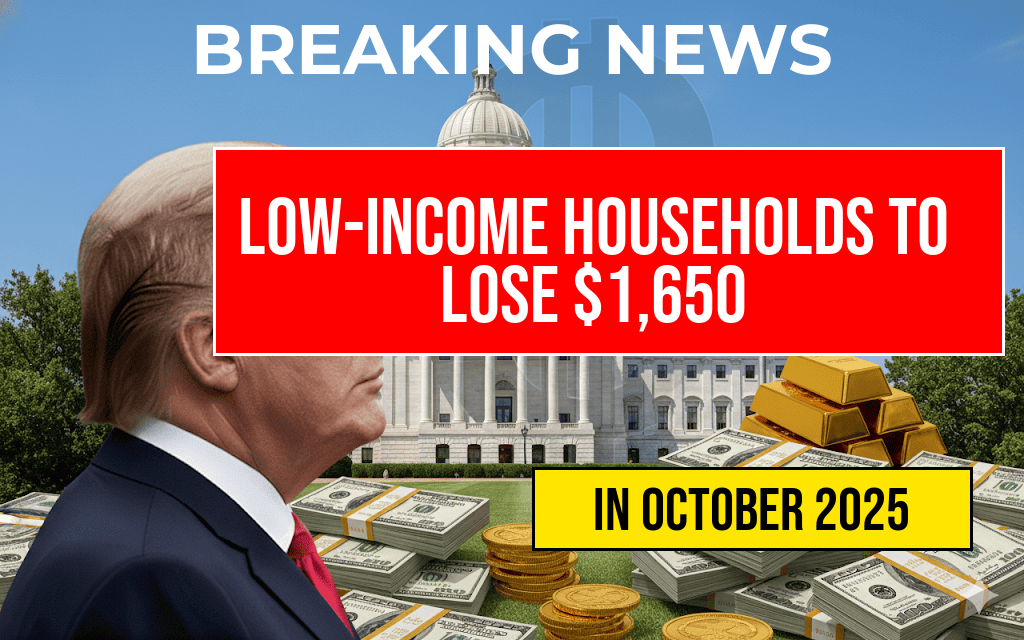Low-income households across the United States are poised to see a significant reduction in their overall net income as a result of recent policy adjustments. Experts project an average decrease of approximately $1,650 annually, a shift driven by changes in tax credits, benefit eligibility, and social assistance programs. This development has sparked concern among advocates for economic equity, who warn that the policy modifications could deepen financial struggles for vulnerable populations. The new framework, enacted by federal and state agencies, aims to recalibrate welfare and tax policies but is criticized for potentially undermining the financial stability of households already operating on thin margins. As policymakers defend the changes as necessary for fiscal sustainability, affected communities and economic analysts are scrutinizing the long-term implications of these shifts.
Overview of Policy Changes Impacting Low-Income Households
Key Adjustments and Their Rationale
- Modification of Child Tax Credits: The expansion of the Child Tax Credit (CTC) introduced during the COVID-19 pandemic has been rolled back, resulting in reduced benefits for many families.
- Reduction in Supplemental Nutrition Assistance Program (SNAP) Benefits: Eligibility criteria have tightened, and benefit amounts are expected to decline for some recipients.
- Reinstatement of Income Eligibility Thresholds: Stricter income limits for eligibility in various assistance programs are expected to eliminate benefits for households near the cutoff points.
- Adjustment of Earned Income Tax Credit (EITC): Eligibility calculations and benefit levels are being recalibrated, leading to decreased refunds for some low-income workers.
Projected Financial Impact
| Household Income Range | Average Income Loss | Percentage of Pre-Policy Income |
|---|---|---|
| $20,000 – $30,000 | $1,650 | 5.5% |
| $15,000 – $20,000 | $1,650 | 8.3% |
| Below $15,000 | $1,650 | 11% |
This table illustrates the estimated reduction in annual net income across different low-income brackets, highlighting the disproportionate burden on those with the least financial cushion.
Implications for Low-Income Families
Economic Strain and Household Stability
For families already operating near the poverty line, a loss of $1,650 annually can significantly impact their ability to cover essentials such as housing, healthcare, and food. Households may be forced to cut back on discretionary spending, delay medical care, or seek additional sources of income, which can be challenging amid limited employment opportunities.
Broader Community Effects
Reduced disposable income among low-income households can ripple through local economies, decreasing demand for goods and services and potentially slowing economic recovery in affected communities. Local businesses, particularly small retailers and service providers, may experience declines in sales, further stressing economic resilience.
Responses from Stakeholders
Advocates for Economic Equity
Organizations like the National Disability Rights Network and the Department of Health and Human Services have condemned the policy shifts. They argue that these changes undermine efforts to lift families out of poverty and widen existing disparities.
Government Perspectives
Officials contend that the adjustments are necessary to ensure the sustainability of social programs amid mounting fiscal pressures. They emphasize that targeted reforms aim to eliminate fraud and streamline eligibility criteria, though critics argue that the net effect disproportionately harms those who depend most on these benefits.
Expert Analysis and Future Outlook
Economists warn that the cumulative effect of these policy changes could entrench poverty for many families, making upward mobility more difficult. The American poverty rate remains high, and experts suggest that without targeted support measures, setbacks from policy shifts could reverse recent gains in economic inclusion.
Some policymakers are calling for compensatory measures, such as increased minimum wages or expanded affordable housing initiatives, to offset the income losses. The debate continues over balancing fiscal responsibility with social equity, with affected communities anxiously awaiting further legislative action.
Frequently Asked Questions
What is the main impact of the new policy changes on low-income households?
The new policy will result in a loss of approximately $1,650 in net income for low-income households annually, significantly affecting their financial stability.
Which households are most affected by these policy changes?
Low-income households that rely on government assistance and social programs are most impacted, as the policy reduces benefits and support for these groups.
Why are these policy changes being implemented?
The policy changes are intended to reform and reduce government spending, but they have the unintended consequence of decreasing net income for vulnerable populations.
How might these changes affect the daily lives of low-income families?
Low-income families may face increased financial strain, difficulty affording essentials such as food, housing, and healthcare, and may need to adjust their budgets or seek additional support.
Are there any measures or programs available to help mitigate these impacts?
Some local or community programs may offer additional assistance or resources, but overall, these policy changes pose significant challenges for low-income households seeking financial stability.





